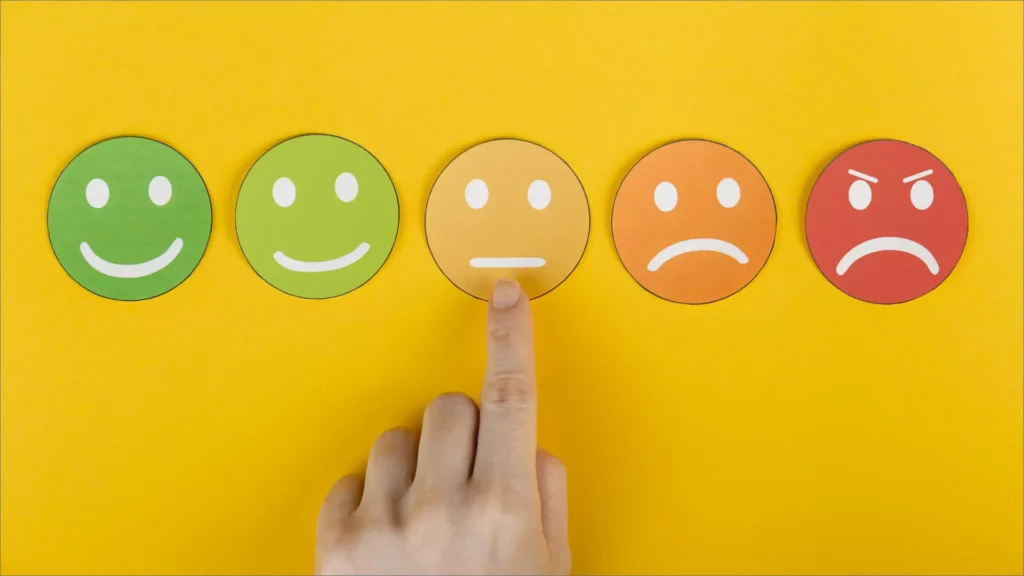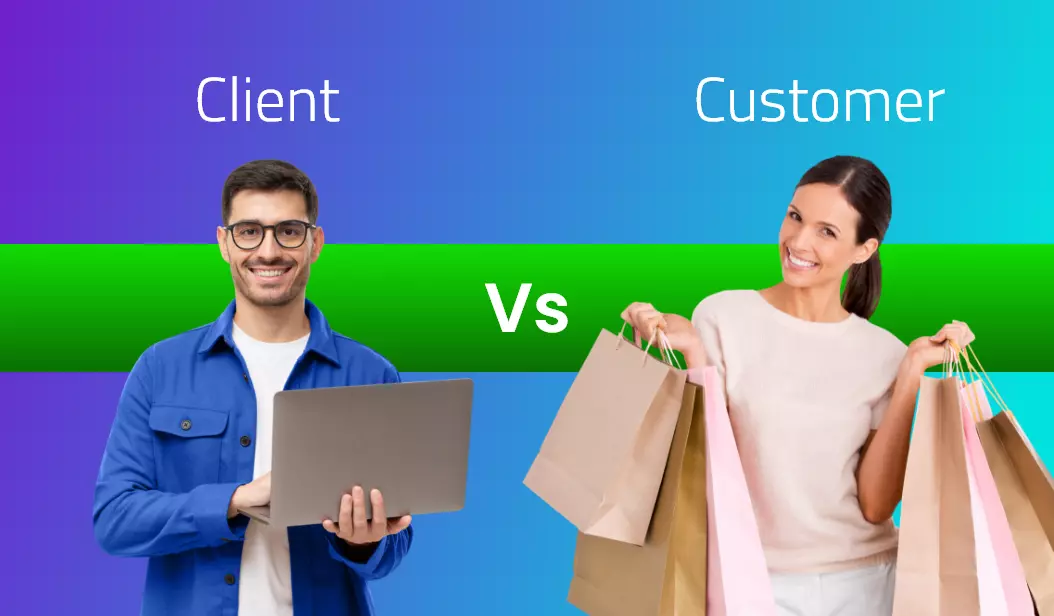Client Vs Customer : What Is The Difference
Individuals or organisations interested in your business’s products or services are either clients or customers. These two different revenue sources have different expectations and goals from their interaction with the business.
If you are in the sales department or a customer service agent, you can benefit by understanding the difference between client and customer. It will help you to create effective sales strategies and build productive relationships with your prospects.
This article will discuss client vs customer comparison, including their definitions and key differences between these terms.
What Is A Client?
When someone becomes a business client, they typically have a specific goal. It may involve satisfying a particular need or resolving a problem within a defined timeframe. For instance, a pet owner who uses a particular veterinary clinic will bring their animals to that facility for treatment.
The financial relationship between your client and your business depends on your business model. For example, Businesses that depend on clients may offer regular payment plans through their sales representatives or client services. Alternatively, clients may pay an upfront fee for the services they need.
Some examples of businesses that rely on clients include:
- Dental clinics
- Accounting services
- Law firms
- Advertising agencies
- Tutoring companies
- Primary care physicians
- Gyms
What Is A Customer?
When it comes to the definition, a customer means a person or an organization that buys something from a store, shop or business. Evidently, the word “customer” is associated with casual purchases.
Customers engage in a financial exchange with a business to obtain its products or services. Unlike clients, these transactions do not typically lead to a formal, ongoing business relationship. Once a customer has completed the transaction and obtained the desired products or services, their interactions with the business are generally limited.
Examples of businesses that primarily deal with customers include:
- Supermarket and shops
- Cafes and coffee
- Petrol stations
- Restaurants
- Hair and beauty salons
- Pharmacies
- Online retail shops
Key Differences Between Client And Customer

The first and the most obvious difference between client and customer is the meaning. Just to recall, a customer is a person who buys goods and services from a company, and a client looks for professional services from a business.
Now that you know the definition of customer and client, let's find out the key differences between both:
1. Exclusivity
Clients typically rely on a particular business to fulfil their needs, whereas customers tend to patronize multiple businesses offering similar services or products.
For instance, a dental clinic client may utilize the same facility for all their dental requirements. In contrast, customers may choose different supermarkets depending on weekly promotions or their schedules.
Some businesses, such as restaurants and coffee shops, offer loyalty programs to foster customer loyalty and encourage future purchases. This strategy enables businesses to predict their incoming customer revenue, increasing their financial stability.
2. Customization
Clients usually seek out businesses to solve problems or find solutions tailored to their needs, whereas customers primarily purchase products or services. As a result, businesses that cater to clients can offer more personalized services.
Such client-focused businesses may provide consultation services to prospective and existing clients, which may involve designing and customizing programmed or products to meet their requirements.
For example, an investment banking service may tailor their legal advice to clients based on their financial objectives and assets.
While customization is typically associated with clients, it’s worth noting that there are also some options for customers to personalize their purchases. Online retail businesses, in particular, offer numerous opportunities for customisation. However, unlike clients, customers’ customisation options are typically restricted to what the business has in stock or can offer.
3. Sales Strategies
Businesses adopt distinct sales strategies to cater to the differing priorities of customers and clients. Although many businesses use marketing campaigns and lead generation to increase their outreach, these methods may not be equally effective in appealing to both groups.
Clients place significant importance on building meaningful business relationships, yielding positive results. Therefore, businesses can attract clients by highlighting their client services team and sharing testimonials that showcase successful client relationships.
On the other hand, appealing to customers involves launching sales campaigns to attract them. Since customers tend to shop around and aren’t restricted to one business for their product or service needs, businesses can entice them with sales campaigns and the opportunity to receive free products or services.
Emphasizing the value of the product or service is crucial in attracting customers, just as emphasizing client relationships is crucial.
4. Formal Contract
When a client engages with a business and its products or services, they commonly sign a formal contract. In contrast, customers typically do not sign formal contracts. The details of these contracts are specific to the type of relationship the client seeks with the business, as well as the industry and services offered. Typically, these contracts include the terms of service, a privacy acknowledgement, and billing information.
Formal contracts are essential for establishing a clear understanding of the responsibilities of both the business and the client, ensuring a productive relationship.
For example, tutoring companies often require clients to sign a contract specifying the tutor’s presence in the home or the level of contact between the tutor and the student.
In contrast, customers typically do not sign formal contracts to establish an ongoing relationship with the businesses they purchase from.
5. Depth Of Relationship
Clients often build strong relationships with the businesses that offer them products or services, which fosters loyalty and increases the likelihood that they will continue to work with the business and refer others to it.
For instance, even after moving to a different location, a dental clinic’s client may continue to use their dental services because they have established a relationship with the clinic and their dentist.
In contrast, customers choose which businesses they purchase from based on the value and quality of the available products and services. Customers are also encouraged by factors like location and convenience to determine where they make their purchases.
This criterion impacts whether customers change their go-to supermarket and cafe rather than remaining a consistent customer for one particular business.
6. Length Of Sales Cycle
The sales cycle duration for clients and customers differs significantly. With clients, the sales cycle is generally longer because of their involvement in a long-term financial commitment to a business. As a result, clients tend to provide businesses with more revenue over a specified period.
A business prioritizing client relationships often requires fewer clients to meet its revenue goals. An accountant, for instance, may have only a few key clients that generate most of the business’s revenue for years or even decades.
On the other hand, the sales cycle for customers is typically shorter since their financial commitment to the business is limited to a one-time purchase or payment for a specific product or service.
Business sales representatives may need to acquire a larger number of customers to meet their revenue goals, and the lack of consistency in customer purchases means that sales representatives cannot rely on repeat customers for their revenue.
Characteristics Of Client

Following are some noteworthy characteristics exhibited by clients :
I. Their Expectations are Realistic
Clients typically have practical expectations regarding your work capabilities, making it effortless to collaborate with them. They are responsible individuals who conduct thorough research before engaging with you.
Once both you and your client have established the essential details, such as the budget and end goal of the project, it becomes much simpler to work with these types of clients.
II. They Trust your Expertise
A good client takes the initiative to advance the project and communicates their needs, desires, and ideas clearly and constructively. This proactive approach facilitates the project’s timely completion and ensures that the outcome meets the client’s expectations.
They prefer to be involved in the process while entrusting you with managing the project effectively. However, exercising caution while balancing their involvement and autonomy is important.
III. They Are Open to Advise
Clients who value your expertise are receptive to advice, eliminating the need to justify your decisions constantly.
However, clients may have a general idea of what they want when they approach you and are more likely to collaborate effectively when they are willing to consider your suggestions.
This openness to advice streamlines the working process, making it much easier to work with them.
Characteristics of Customers

Following are some noteworthy characteristics exhibited by customers :
I. They Usually Come and go Quickly
When customers pay for a specific product, they expect to derive immediate benefits from it. They are more likely to churn after a free trial period or a few paid subscriptions since their needs are often short-lived, and they may no longer find the product valuable or show further interest in it.
Customers are driven by their current needs and may move on to other solutions once they are fulfilled.
II. They Come Here for Convenience
Customers usually do not depend on a single business, store, or organization to fulfil their needs. They are more inclined to seek more convenient options with better prices, making it challenging for businesses to achieve customer satisfaction.
Since customers’ preferences and requirements can differ significantly, businesses must work harder to meet their diverse needs and wants.
III. Their Demands Are Clear And Direct
Businesses that provide one-time services or tangible goods tend to have customers. Unlike service-based businesses, customers of these establishments do not have ongoing relationships with them. It means they are more likely to switch to a different store that is closer or offers better prices.
Customers select the products or services they need and pay for them upfront. While they may revisit the same store in the future, it is solely to obtain an immediate exchange for their money.
Final Words - Client Vs Customer
In conclusion, understanding the differences between clients and customers is essential for businesses to develop tailored sales strategies that meet the needs of both groups. While clients value long-term relationships,
personalized services and formal contracts, customers seek value and convenience through shorter sales cycles and customisation options.
By recognizing and catering to these differences, businesses can attract and retain clients and customers, ultimately contributing to their success and growth.
Read More : What is 4C’s Marketing Model for Business?
Read More : Best Job Sites UK For Employees in 2022
